If you follow this site, you know that I’m not one for long stories with my recipes, so I’ll keep this as short as I can. This easy shoyu ramen recipe really does need a bit of explanation though.
I’ve been living in Japan for the last 4 months because of a work assignment for my wife. Of course, I learned very quickly that ramen in Japan is a very serious thing!
When I first got here, I figured I would do some research and then create some authentic ramen recipes for the website. However, it wasn’t long before I realized that I was only going to do our readers a disservice by trying to create truly authentic ramen recipes on the site. Ramen broth is often very complex and involved. It’s not just some chicken broth and soy sauce. Ramen chefs take great care in creating the “umami” flavors in their complex broths (scroll down below the recipe for more on umami and different types of ramen).
So, instead of trying to create a complex recipe that I do not have the experience or knowledge to create, I decided to create this easy shoyu ramen recipe (soy sauce ramen). My intent with this recipe is to give you a tasty, healthy ramen recipe that rests comfortably somewhere between cup noodles instant ramen and an authentic, complex ramen created by an experienced chef in Japan.
My plan with this recipe is to use it to satisfy my craving for ramen at home in between occasional trips to authentic ramen shops. The soft-boiled soy eggs add the perfect amount of authenticity without too much work. I think you’ll agree that this is a great way to have ramen at home without a ton of work.
This recipe is also gluten free because it is a easy to find brown rice noodles that work well for ramen (see recipe notes for details).
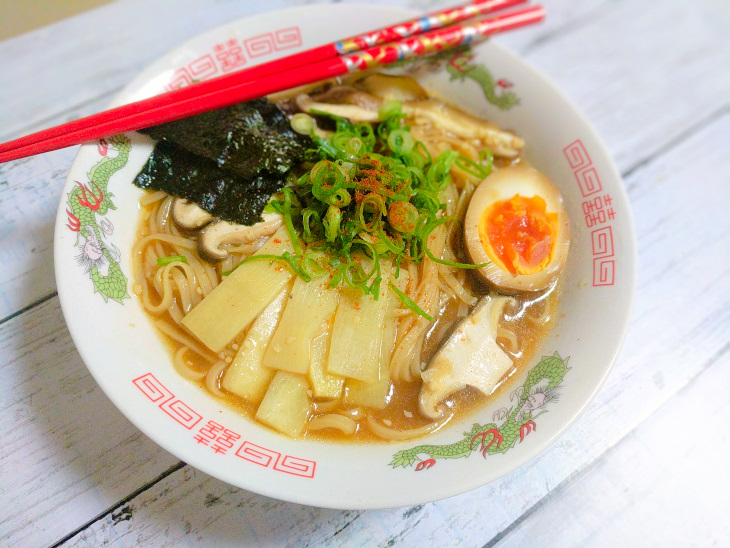
Ingredients
- 2 egg large (optional)
- 1 Tbsp sesame oil
- 1 Tbsp bottled minced garlic or 3-4 cloves fresh, minced
- 2 tsp minced ginger fresh or bottled (no sugar in ingredients)
- 2 cups chicken broth
- 1/2 cup Bragg Liquid Aminos divided (half for egg marinade), see notes
- 6 oz shiitake mushrooms sliced or chopped
- 8 oz brown rice noodles see notes
- 1 can bamboo shoots 8 oz, optional topping
- 1 sheet nori seaweed optional topping
- 2 green onion chopped, for garnish
Instructions
Soft-Boiled Ramen Eggs: Instant Pot Method
- Add 1 cup of water to the liner (pot) of your Instant Pot. Add the rack that comes with your instant pot to the bottom of the liner. Add eggs on top of the rack. The eggs shouldn’t be touching the water.
- Close the lid and set the pressure release valve to “sealing”. Set the Instant Pot to manual-high for 1 minute. When the Instant Pot beeps indicating that the 1 minute cook time is over, allow it to naturally release pressure for 1 minute and then carefully move the pressure release valve to venting. NOTE: For softer eggs, use "0" minutes on manual high and move to venting right after cook time is up.
- When all of the pressure is released, remove the lid and move the eggs to an ice water bath in a large bowl for 5 minutes.
- Remove from the ice water and carefully peel the eggs. Add the peeled eggs to a ziploc bag with 1/4 cup of the Bragg liquid aminos. Let them marinate for at least 30 minutes. You can store in the refrigerator if you are making these long before you plan to use them in the ramen.
Soft-Boiled Ramen Eggs: Stove Top Method
- Bring a pot of water to a boil with enough water to cover the eggs by 1 inch. Do not add the eggs yet.
- Once the water is boiling, add the eggs carefully to the boiling water and cook for 6-8 minutes. 6 minutes should be runny, 8 minutes should be soft but not runny.
- When the cook time is up, remove the eggs and transfer the eggs to an ice water bath in a large bowl for 5 minutes.
- Remove from the ice water and carefully peel the eggs. Add the peeled eggs to a ziploc bag with 1/4 cup of the Bragg liquid aminos. Let them marinate for at least 30 minutes. You can store in the refrigerator if you are making these long before you plan to use them in the ramen.
Ramen
- Heat sesame oil over medium heat in the bottom of a large sauce pan. Add garlic and ginger and cook for 1-2 minutes (until fragrant but not browning).
- Add chicken broth, 1/4 cup Bragg aminos, and 1 cup water. Bring to a boil.
- Add the noodles and cook for 3-4 minutes (time may vary depending on which noodles you use). Remove the noodles with tongs or a pasta spoon and divide evenly between 4 large serving bowls.
- Add the mushrooms to the boiling water and cook for 3 minutes. Remove the pot from the heat.
- Divide the broth and mushrooms between the 4 bowls by ladling it over the noodles.
- Top the ramen with nori, drained bamboo shoots, 1/2 of a ramen egg, and sliced green onions.
- Note, if the ramen eggs were stored in the fridge, you may want to warm them a bit. It isn't uncommon to have room temperature or even slightly cold soft-boiled eggs in ramen, but some people may not like that. The soup will warm the egg to some degree but probably will not warm the very middle if it comes straight from the fridge.
Notes
Pin this easy shoyu ramen recipe so you don’t lose it. Use the pin icon on the image below (hover on desktop to see it). This one would go great on Asian boards, gluten free boards, clean eating boards, soup boards, and more.
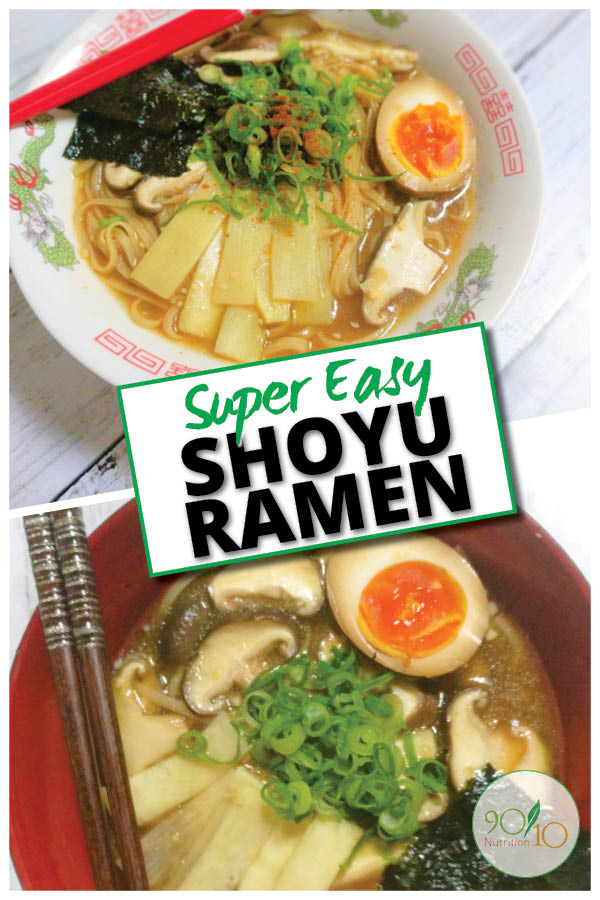
One of the first things that made me realize that serious, authentic ramen was not something I felt comfortable putting on my site was my visit to the ramen museum in Shin-Yokohama. If you love ramen, put this on your bucket list.
It’s an indoor “amusement park” centered around ramen. The upstairs gives a bit of history and education on ramen (as well as the obligatory gift shop), and the downstairs is a recreation of the streets of Japan in the 50s (see the pic below). Each storefront is a different ramen shop representing a different area of Japan. You can literally just go from shop to shop and have full bowls or 1/2 servings of different types of ramen.

In the picture below, you can see the variations of ramen as seen in the museum. Please excuse the picture as it is a picture of a hanging cloth banner in the museum.
The recipe on this page is a simplified version of the soy sauce based ramen known as “shoyu ramen”.
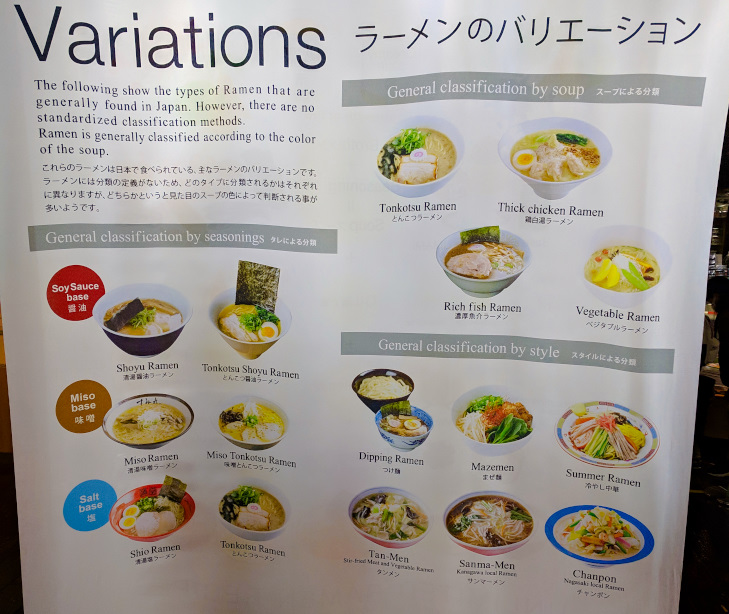
As you can see from this picture from the museum, there are a lot of variables in Japanese ramen! The broth ingredients can be abundant and very purposeful.
The goal is to create “umami” flavor. Umami is considered a flavor just like sweet, salty, sour or bitter. It refers to the flavor produced by glutamates found in various foods such as mushrooms. This is the reason you will see monosodium glutamate (or MSG) added to many Asian foods as it produces umami without complex ingredients.
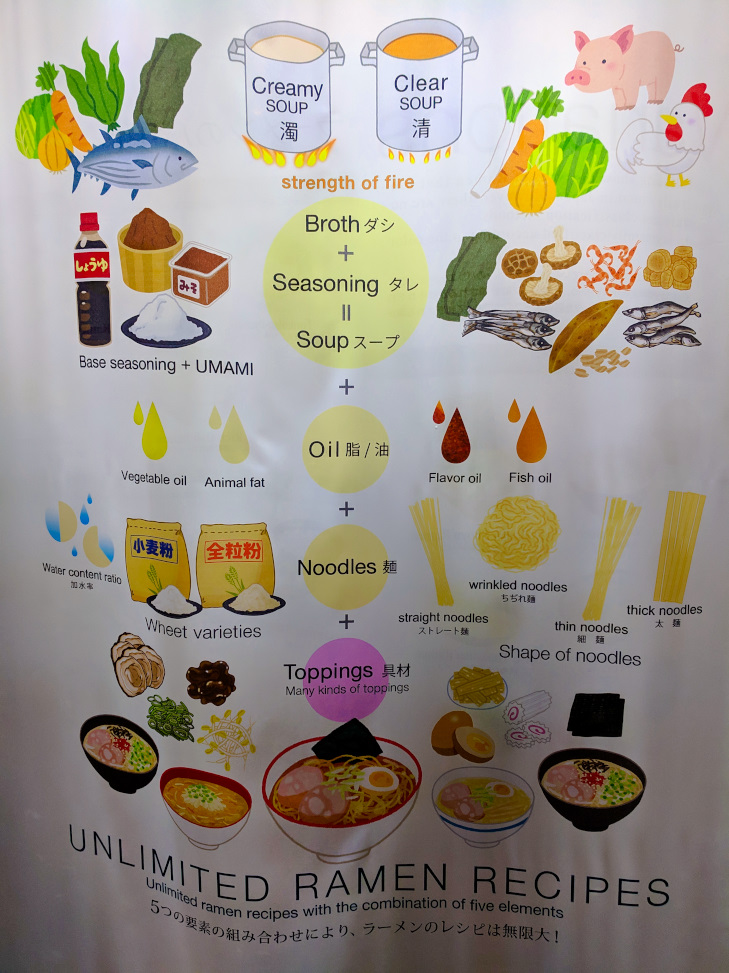
What we end up with in this easy shoyu ramen recipe is a basic and quick ramen that will satisfy your craving for ramen between trips to authentic ramen shops (if you should have one in your area).
You can also try this wonderful Instant Pot Pork Ramen Recipe if you want more easy ramen recipes to tide you over.
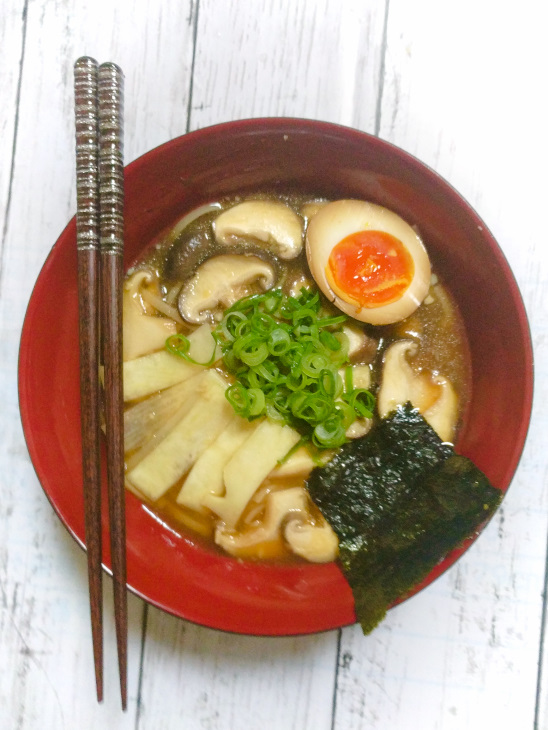



Comments (1)
This was a great, quick meal and really delicious.